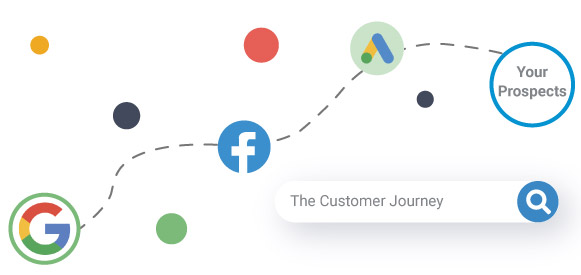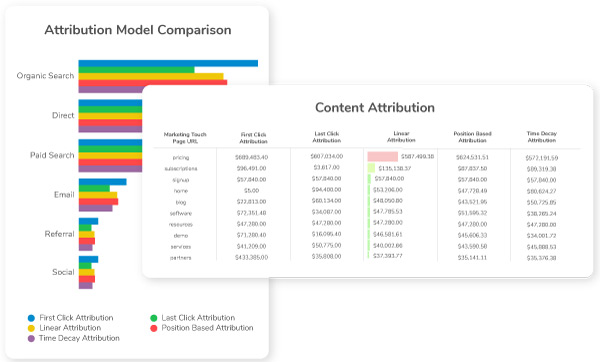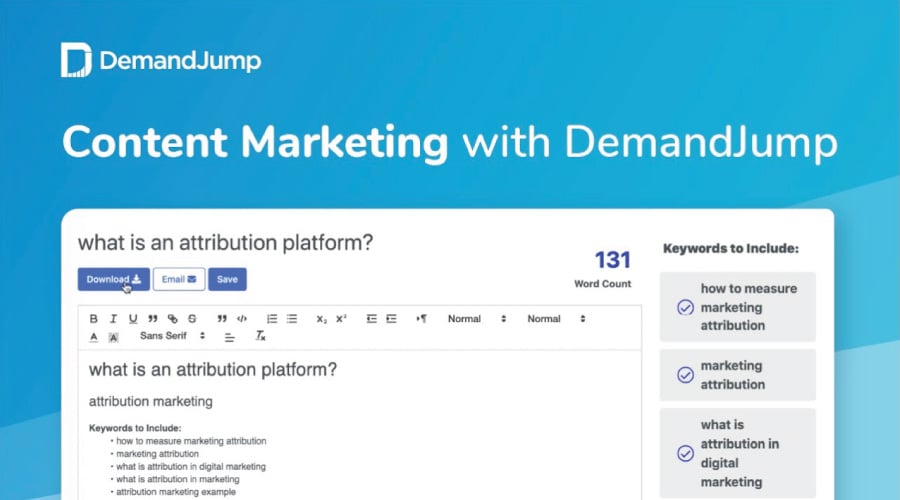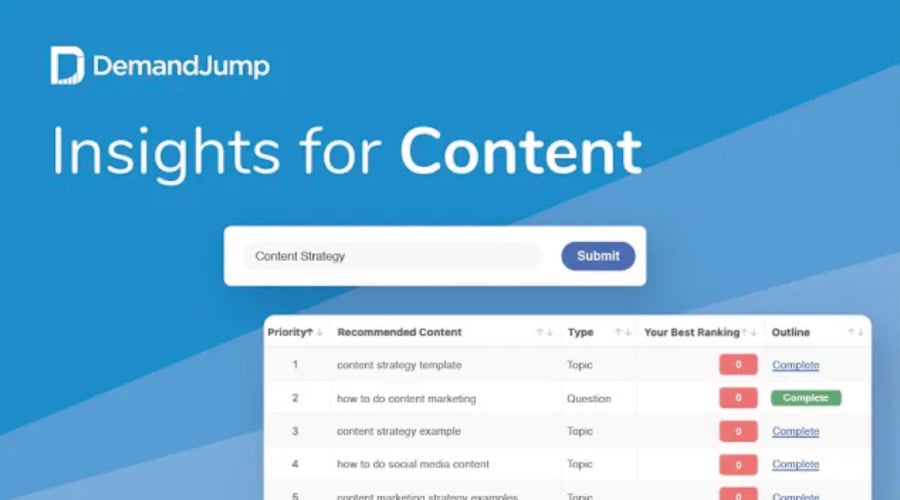Marketing Attribution Platform
What if you could track how your audience interacts with any single piece of content or marketing material your company produced? Whether a piece was ignored or acted on, shared or clicked to read more, shelved for weeks before making a purchase, or disregarded until the fifth time an advertisement appeared—you would see what effect your efforts had with various audiences, in every environment where you reached out.
Well, the good news is you can achieve greater transparency with a marketing attribution platform.
Marketing attribution allows you to follow the full cycle of a marketing strategy to identify which touchpoints lead to interaction, engagement, conversions, and sales–or had no impact at all.

The benefits are extensive: you learn more about your audience, how they respond to specific marketing approaches, what opinions they have about products and services, how they view themselves, and what they want. With all this information, you begin to dial in your most cost-effective tools, and you learn more with every interaction.
Marketing attribution can be more telling than some consumer research or focus groups because you’re witnessing organic responses the audience might be unaware they’re having. For marketers, this is golden insight.
Marketing attribution tools also allow you to see how your strategies reach different demographics across a range of platforms and mediums—and good marketing attribution tools show you where that interaction happened in the marketing funnel.
Have we sold you on the benefits already? Then let’s start at the beginning and discuss how to win these outcomes for yourself.
What is an Attribution Platform?
A marketing attribution platform is software that allows you to track interactions with your audience so you can better quantify previously-intangible connections and behaviors. Like using a sales funnel to forecast sales, an attribution platform gives you information that provides an even closer look at customers’ habits and interactions with your marketing approaches.
Track touchpoints across social media platforms, direct marketing, online advertisements, organic traffic, web page visits, clicks, shares, and every way your audience connects with your brand. Learn how many interactions, how much time, and how often users are seeing your ads and responding to them. Simply put, measure how well your strategy is working on a case-by-case level to see global patterns.
 (DemandJump's marketing attribution platform shows multiple models so you can see your spend's effectiveness from all angles.)
(DemandJump's marketing attribution platform shows multiple models so you can see your spend's effectiveness from all angles.)
In doing so, you win the chance to improve your future marketing strategies, and you respond more quickly to changes in the market and to consumers’ attitudes towards your brand.
What is a Marketing Touchpoint?
Any time a consumer interacts with a company, we call that instance a touchpoint. Whatever the method or mode—a response to an ad, a click to read more, a Like on social media, or a Share—these interactions represent a chance for your customer to make a purchase, which is the end-goal of your marketing strategies, whether direct or indirect.
These touchpoints happen across multiple mediums and include all aspects of your marketing strategy. Here are the high-level types of marketing touchpoints:
Social
Social media is one the most important touchpoints to measure because a consumer’s intent on a social media site isn’t necessarily to connect with a brand. When you can attribute a sale to social media, you want to be able to track the trajectory that led a customer to make a purchase.
Organic
Tracking organic web traffic helps you better understand your position in terms of SEO relevancy. Organic touchpoints, while seemingly spontaneous, are often connected to more nuanced, complex positioning of your brand and keyword strategy.
Mobile
A good marketing attribution platform can give you the most information about your marketing funnel, including whether the consumer connected to your website or made a purchase from their mobile device.
Online Advertisement
Ads and promotions online are a key indicator of how well your brand has established itself in a given market. While design, content, and placement can affect how well an advertisement works, these are typically more successful in a multi-tiered marketing strategy, and tracking the effectiveness of an ad can be helpful in single and multi-touch attribution models in digital marketing.
Digital Marketing Content
The drive of digital marketing content is to generate brand awareness across multiple platforms. From articles to videos, this content helps solidify your brand among consumers, but it can be the most difficult to track its effectiveness. The best marketing attribution tools can reflect how these pieces of digital marketing content are contributing to your sales.
How Do You Track Marketing Attribution?
A customer’s journey to your website—or to a purchase of your product—can take many forms, both simple and complex. Sometimes, a single advertisement will lead a cold buyer to your website, and that’s all it takes.
More often, a brand will interact with a potential customer multiple times across a variety of mediums that might eventually lead to a sale. Marketing attribution models track those different journeys.
There are six main types of attribution models: first touch, last touch, last non-direct touch, time decay, position-based, and data-driven. No single model can account for every interaction with a customer that leads to a sale. But, instead, these models represent different pathways, and, in combination, you can get a reliable account of how customers are engaging with your brand.
All six of these attribution models fall into single touch or multi-touch. These are methods of deciding how you measure audience interaction: are you trying to understand the single avenue—an ad, post, link, or touchpoint—that led someone to your website and to make a purchase? Or are you trying to track the multiple interactions that comprised someone’s relationship with your brand over time?
Single-touch attribution models pinpoint which touchpoint should receive 100% credit for a sale. These generally represent the simplest pathway for a customer.
This model reflects any time a customer makes a sale based on their first interaction with a brand or company. That initial touchpoint receives all credit, whether that comes from organic traffic (which might be connected to your keyword ranking) or if a direct CTA on a product ad drove a customer to your e-commerce store.
This model demonstrates the simplest, cheapest form of connection with your customers, and it’s often used for brands that have a short sales cycle.
Similar to a first-touch model, the last touch attribution model attributes 100% of the sales credit to an individual touchpoint. In this case, it’s the final interaction a consumer has before making a sale.
Often, this model is used to track sales for brands with a longer sales cycle. The consumer likely has had multiple interactions with your brand before converting, and this model places the importance on that final interaction: was it a promotional ad? A more aggressive CTA? This model tracks that last interaction to learn why a customer made a sale.
-
Last Non-Direct Touch Attribution
Still, in the vein of assigning 100% of the sales credit to a single touchpoint, the last non-direct touch attribution model is a more educated version of the last touch attribution model: in this case, the last, most relevant touchpoint receives credit.
The last touch non-direct marketing attribution example might include someone who signed up for a newsletter. For any given reason, the majority of the newsletters went unopened, and only months later did they open a newsletter, click a link to the website, and, after browsing, make a purchase. While a last-touch model would attribute the sale to the website touchpoint, a last non-direct attribution model would attribute the sale to the newsletter.
The next three models represent what you would see from multi-touch attribution platforms. They show how multiple touchpoints can lead to a sale, offering a more complete understanding of complex sales cycles.
With multi-touch attribution models, your goal is to look at the multiple interactions a consumer had with your brand to try to determine which carried the most weight to drive a sale. Time decay attribution includes a critical variable here, which is the timeline of a sales cycle. It takes into account the multiple interactions but places more value on the interactions closest to a sale, assuming that these had greater relevancy to the consumer.
-
Position-Based Attribution
Multi-touch attribution models can spread out the credit given for a sale among multiple touchpoints. This accounts for a more complex sales cycle where the customer made a decision based on lots of input, not just a single interaction.
Position-based attribution divides an amount of credit evenly among all interactions that occurred between the first touch and last touch of a conversion cycle. This gives value to each of the interactions a customer had with your brand from the first time they learned about you, to the final ad or email that led to a sale. It assumes those interactions that occurred between a and z must have had a positive effect on the consumer.
In this model, machine learning is used to track a high volume of engagements and sales conversions—including multiple touchpoints with lots of consumers—to identify patterns that can lead to forecasting, identify patterns, and demonstrate the value of certain touchpoints. This model takes into account all the different ways consumers engage with your brand, and the more data you have, the more accurate the model.
The top attribution platforms give you access to a combination of these six attribution models to be able to represent the various ways your company interacts with the customer base. Switching between models to analyze the same campaign from different perspectives can also be valuable to analyze the lessons learned before the next initiative.
How Do You Track Marketing Touchpoints?
The best marketing attribution tools show you how your marketing spending leads to conversions from each specific touchpoint, assigning value points so you can rank different content or ad strategies.
For example, by using a tool like Google Analytics, you can track traffic directed to your website from multiple different pages, compare average time on page, and track a consumer’s path to your website.
But finding a comprehensive tool that reflects the complete cycle of all your marketing strategies can be difficult—especially when your audience typically follows more complex pathways to your website to complete a sale. DemandJump provides you with all the resources you need to prove the ROI of your marketing efforts in each and every sale.
With automated account-based attribution software, you get transparency of all touchpoints in your marketing funnel, from learning how specific keywords drive sales to know how pieces of content can contribute to a conversion.
If you’re interested in learning more about how DemandJump’s marketing attribution platform works, see a demo of how we can help you measure your marketing performance.












 (DemandJump's marketing attribution platform shows multiple models so you can see your spend's effectiveness from all angles.)
(DemandJump's marketing attribution platform shows multiple models so you can see your spend's effectiveness from all angles.)